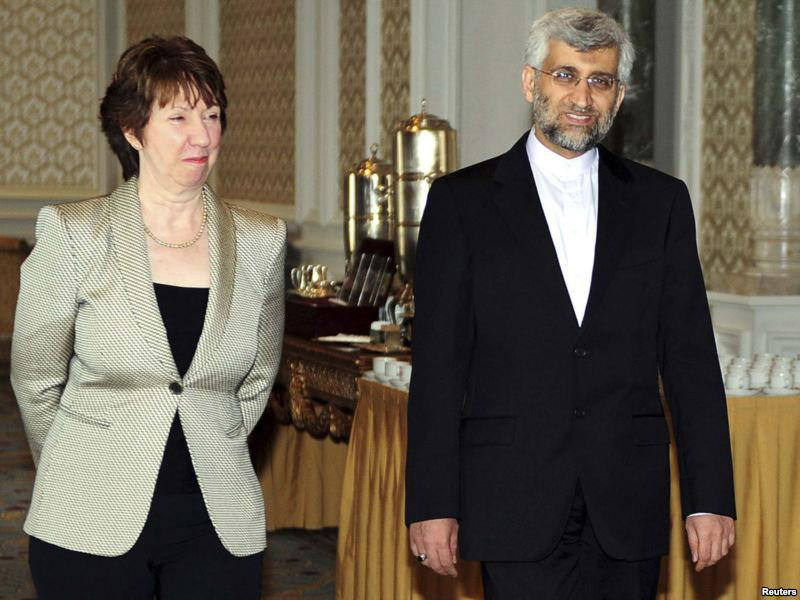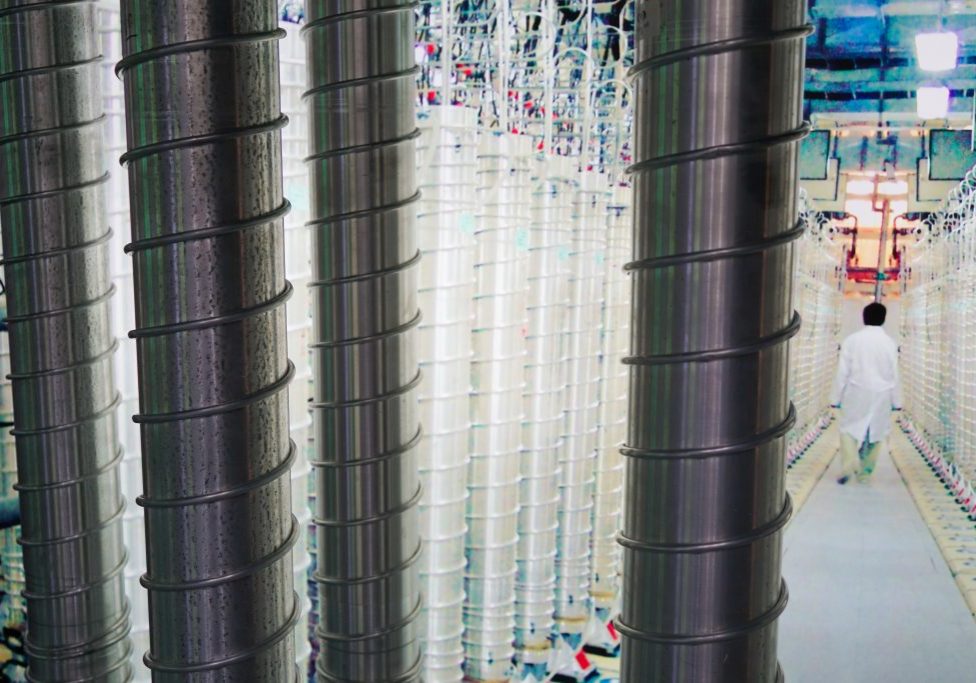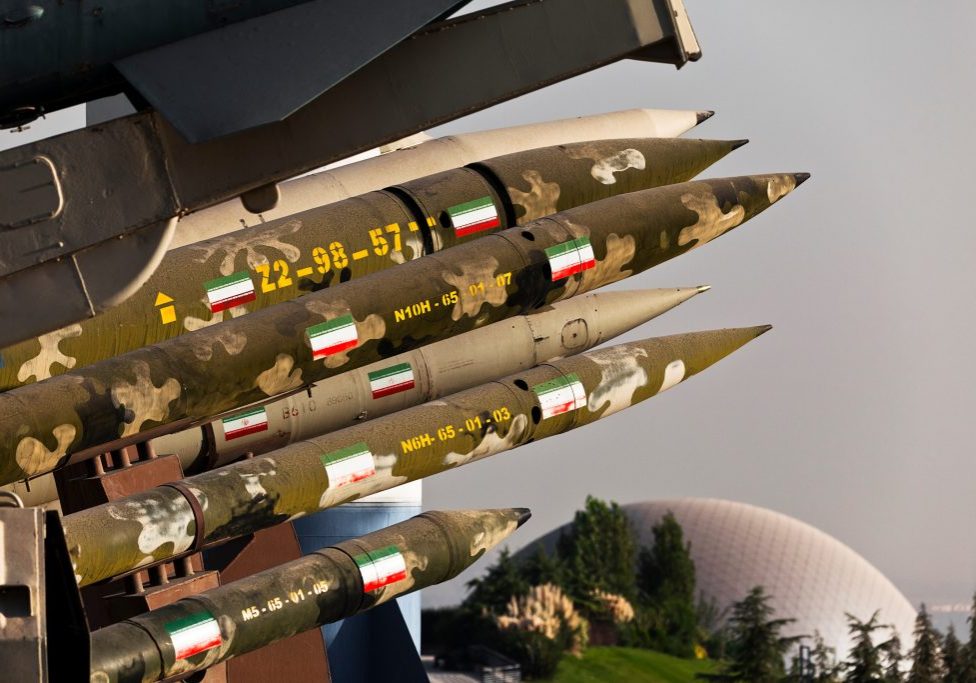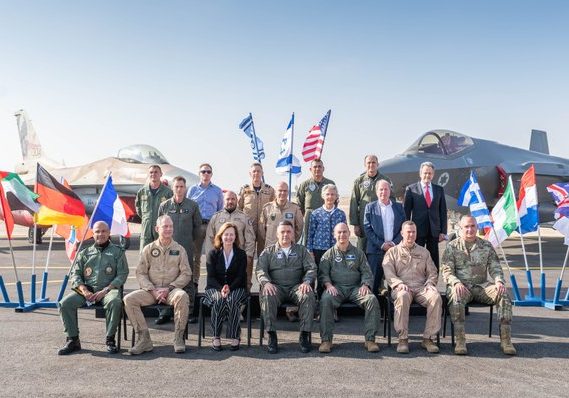Australia/Israel Review
Nukes on the Table
Apr 26, 2012 | Dore Gold

Dore Gold
At the end of March 2012, Iranian Foreign Minister Ali Akbar Salehi announced that Western talks with Iran over its disputed nuclear program would begin on April 13 and held in Istanbul, Turkey. The Western side would be represented by the P5+1 – the five permanent members of the UN Security Council (the US, Russia, Britain, China, and France) and Germany.
The previous talks between Iran and the P5+1 that were held in Istanbul in early 2011 ended with no agreement between the parties. Iran had demanded the removal of sanctions against Iran as a precondition for talks, while at the same time it indicated that it would not even discuss the suspension of its uranium enrichment program, as called for in past UN Security Council Resolutions.
US Secretary of State Hillary Clinton was very cautious when she announced the new talks on April 1, during a visit to Istanbul where she heard a report from Turkish Prime Minister Erdogan and Foreign Minister Davutoglu, after their visit with Iran’s Supreme Leader, Ayatollah Ali Khamenei, who told them that according to Islam, weapons of mass destruction are religiously prohibited. She suggested that the Supreme Leader’s stance now needed to be operationalised and then she explained:
“We will be meeting with the Iranians to discuss how you translate what is a stated belief into a plan of action. And if the Iranians are truly committed to that statement of belief as conveyed to the Prime Minister and the Foreign Minister, then they should be open to reassuring the international community that it’s not an abstract belief but it is a government policy. And that government policy can be demonstrated in a number of ways, by ending the enrichment of highly enriched uranium to 20%, by shipping out such highly enriched uranium out of the country, by opening up to constant inspections and verifications.”
The clock is ticking on the Iranian nuclear program. Last December, US Secretary of Defense Leon Panetta appeared on the CBS news program, “60 Minutes”, and declared that Iran could have a bomb within twelve months. He added that the time frame might be shorter if the Iranians have “a hidden facility somewhere in Iran that may be enriching fuel.” If Panetta’s assessments are correct, then Iran’s best diplomatic strategy for 2012 is just to let the clock run out. The West will have to carefully develop a counter-strategy to neutralise Iran’s likely course of action.
The Reliability of the Iranians’ Argument that Nuclear Weapons Violate Their Islamic Beliefs
The West appears to have placed a great deal of stress on the Turkish report that the Supreme Leader believes that the use of nuclear weapons runs contrary to Islamic beliefs. This argument has been around for many years. There have been reports that Ayatollah Khamenei actually issued a fatwa (religious ruling) in this regard. For example, Fareed Zakariah wrote in Newsweek in 2009 that Iran will not build nuclear weapons because Ayatollah Khomeini said they were un-Islamic and his successor, Khamenei, issued a fatwa calling them immoral.
The problem with this argument is that while Iran has spoken about a nuclear fatwa, it never has produced one for the world to see. On this very point, Pierre Goldschmidt, the former Deputy Director General and Head of the Department of Safeguards at the International Atomic Energy Agency, (IAEA) spoke at a conference of the International Institute for Strategic Studies (IISS) on February 4, 2012 and disclosed that he asked for a copy of the exact text of the Iranian fatwa on nuclear weapons in 2005. From his presentation it was clear that the Iranians never came forth with the text.
The Iranian argument about the nuclear fatwa has many other problems that should be noted. Mehdi Khalaji is an expert on Shi’ite Islam who actually studied in Iran’s religious seminaries in Qom. Currently, he serves as an expert at the Washington Institute for Near East Policy. Khaliji agrees that there is no written document that could be described as a fatwa on the subject of nuclear weapons. He explains that the statements made by Khamenei have been oral. They might still be legally significant, but it would be a mistake to view these statements as a permanent religious determination.
Moreover, according to Khalaji, Khamenei has begun to shift his position; he has begun to use more equivocal language, stressing that their use is forbidden, but not their production. More importantly, Khalaji explains: “… should the needs of the Islamic Republic or the Muslim umma change, requiring the use of nuclear weapons, the Supreme Leader could just as well alter his position in response.” Thus, Iran is not constrained by Shi’ite religious doctrine from producing or even using nuclear weapons.
Khalaji points to another issue affecting Iranian arguments in nuclear negotiations about atomic weapons being prohibited under Islam. In Shi’ite doctrine there is a concept called taqiya, which historically allowed Shi’ite Muslims to deceive their Sunni adversaries in order to survive in a mostly Sunni Muslim world. Ayatollah Khomeini called on Iranians to use taqiya for the “preservation of Islam and the Shi’ite school.” In a speech to the Revolutionary Guards in 1981, according to Khalaji, he put it more bluntly: “…for the sake of Islam’s survival, it is obligatory to lie.”
Western accounts of past negotiations with Iran are filled with stories of agreements that were never implemented by Iran in good faith. Thus, right after Iran agreed with the EU-3 to a suspension of enrichment between 2003 and 2005, it began to argue with the contents of the agreement it had signed, seeking to limit the scope the activities it undertook to halt. Former US Secretary of State Warren Christopher once said that the Iranians disavow understandings to which they already agreed. Thus, the story of the nuclear fatwa reflects a much broader problem with Iranian negotiating tactics that the West will need to take into account.
The Priority of Halting All Uranium Enrichment and the Removal of All Current Stockpiles
As background to the debate over the Iranian nuclear program, it is important to know some basic essentials. Uranium is normally found in two forms or isotopes: U-238 and the lighter isotope, U-235. It is only the lighter isotope, U-235, that can undergo nuclear fission and release the energy needed for a nuclear reactor or an atomic bomb.
But natural uranium is only 0.7% U-235 and 99.3% U-238. Iran has converted its uranium ore into a gas, at a facility in Isfahan, and then injected the uranium gas into centrifuges that spin at high speeds to increase the amount of U-235, at its Natanz enrichment plant. A civilian reactor needs only 3.5% U-235, which is called low-enriched uranium (LEU), while for nuclear weapons, high-enriched uranium (HEU), which is based on at least 90% U-235, is necessary. Iran has been enriching its uranium up to 5% U-235 since 2007.
While the 1968 Nuclear Non-Proliferation Treaty guarantees the right of signatories, like Iran, to use nuclear energy for “peaceful purposes”, that did not include a right to enrich uranium in order to produce indigenous nuclear fuels that could also be employed for nuclear weapons. In fact, many countries with nuclear power infrastructures, like South Korea, Finland, Spain, and Sweden, actually received their nuclear fuel from abroad. Even in the US, 92% of the uranium used in 2010 by nuclear power plants was of foreign origin.
But unlike these other cases, Iran chose to establish its own uranium enrichment infrastructure at Natanz and suspiciously kept it totally secret from the world until 2002, when it was revealed by the Iranian opposition. A second secret enrichment facility, known as the Fordow Fuel Enrichment Plant which was located near Qom, was disclosed in 2009.
It must be stressed that uranium enrichment facilities are extremely expensive. Given the fact that Iran has only one nuclear-power plant at Bushehr, the fuel for which is supplied by Russia, it is reasonable for the West to ask whether the purpose of Iran’s vast enrichment infrastructure is for civilian energy purposes as Teheran declares, or is for hidden military purposes.
Iran’s suspicious behavior with its enrichment facilities led the UN Security Council to adopt six resolutions to halt all enrichment activity – UN Security Council Resolutions 1696 (2006), 1737 (2006), 1747 (2007), 1803 (2008), 1929 (2010).
Nonetheless, according to the last IAEA report issued on February 24, 2012, Iran has managed to produce a total of 5,451 kilograms of 5% enriched uranium. The Wisconsin Project on Nuclear Arms Control has suggested that 914 kilograms of low enriched uranium are needed to produce enough weapons-grade uranium for one atomic bomb. Given the waste that is often produced with the production of the first atomic bomb, it can be anticipated that the current Iranian stockpile could be used for the eventual manufacture of four to five atomic bombs.
The Special Problem of 20% Enriched Uranium
The problem with Iran’s enrichment facilities has become more acute in recent years. When the West refused to supply 20%-enriched uranium for the small Teheran Research Reactor, where the Iranians produce medical isotopes, Iranian nuclear experts went ahead in June 2010 and fed their 5% enriched uranium into the centrifuges to produce 20% enriched uranium, by themselves. With a stockpile of 20% enriched uranium, the Iranians would cut by more than half the time they needed to take the next enrichment step to weapons-grade uranium.
The total production of 20% enriched uranium according to the IAEA was about 95 kilograms this past February. It is projected by the Wisconsin Project that 120 kilograms of 20% enriched uranium is necessary in order to manufacture enough weapons grade uranium for one atomic bomb. Fereydoun Abbassi-Divani, the head of Iran’s atomic energy organisation, announced in June 2011 that Teheran was planning to triple its capacity to produce 20% enriched uranium. There was no pressing civilian need, since the Iranians had more than their domestic requirements of 20% enriched uranium for their Teheran Research Reactor. The excess quantities that would come from tripled production would likely go to Iran’s military program.
Unquestionably, in upcoming negotiations, the West must get Iran to halt enrichment. At this point, it appears that Washington is particularly focused on Iran’s production of 20% enriched uranium, which it views as an “urgent priority” for the upcoming talks. It is expected that the administration will seek to obtain a halt in production and to get Iran to give up its current 20% stockpile and perhaps send it out of the country. But it would be a cardinal error for Western diplomacy to focus only on the 20% stockpile while leaving the 5% stockpile intact and permitting this lower level of enrichment.
For Iran could race to weapons-grade uranium with its low enriched uranium as well. There are two factors which would allow Iran to make a break-through to weapons-grade uranium, even if they use only 5% enriched uranium as a feedstock for their centrifuges. First, the critical factor is the number of centrifuges Iran would utilise. By increasing the number of centrifuges, Iran can shorten the time it would take to reach high-enriched uranium.
The second factor is the speed of the centrifuges to be employed. The standard centrifuge that Iran used was known as the IR-1. The new generation of Iranian centrifuges, known by professionals as the IR-2m and IR-4, by some estimates would be able to increase the output of each machine by 600%. A more conservative estimate is that the output of the new centrifuges is 4 to 5 times greater than the older machines. By August 2011, Iran had already installed 136 IR-2m centrifuges and 27 IR-4 centrifuges at the Pilot Fuel Enrichment Plant (PFEP) at Natanz.
Limiting the Time for Negotiations
Clearly, the talks with Iran that began on April 13, 2012 are not the first diplomatic encounter between the West and the Islamic Republic on the nuclear issue. There were negotiations during the previous decade between Iran and the EU-3 and later between Iran and the P5+1. Certain features of Iranian diplomatic strategy can be discerned from these previous encounters which must be taken into account at present as the West develops its diplomatic strategy.
At the end of the Iranian negotiations with the EU-3 in 2005, Iranian negotiators actually disclosed their approach to their talks with the West. For example, the head negotiator, Hassan Rowhani, revealed that Iran had managed to exploit its negotiations with the West to complete its uranium conversion plant at Isfahan, which produced the feedstock for the centrifuges in Natanz: “The day we started the [negotiating] project there was no such thing as the Isfahan project.” His deputy, Hossein Musavian, was even more blunt on Iranian Channel 2 television: “Thanks to negotiations with Europe we gained another year, in which we completed [the uranium conversion facility] in Isfahan.”
This was a classical case of diplomatic deception – or taqiya – in which the Iranians claimed that they were sincerely interested in reaching an agreement with the West, but in reality, all they were doing is playing for time.
At the end of March 2012, US Secretary of State Clinton expressed an awareness of the time factor: “What is certain is that Iran’s window of opportunity to seek and obtain a peaceful resolution will not remain open forever.” Today, Iran has a strong interest to utilise the time it will be provided with by the negotiations in order to advance with many aspects of its nuclear program and head for the finishing line by producing a nuclear weapon. It will further enlarge its stockpiles of enriched uranium. Iran may seek to install faster centrifuges in both of its main enrichment facilities. Finally, it has an interest in shifting the most sensitive elements of its uranium enrichment – like its production of 20% uranium to the Fordow plant.
By insisting that Iran freeze all enrichment as a pre-condition for the talks, the P5+1 can counter the Iranian strategy of exploiting the talks of letting the clock run out as it produces enough materials in order to manufacture a nuclear bomb. This is not an outlandish demand. According to six legally binding UN Security Council resolutions, adopted under Chapter VII of the UN Charter, Iran is supposed to suspend all enrichment-related activities. These resolutions were supported by Russia and China, as well. Only by achieving a suspension can the West prevent Iran from moving its nuclear program further along under the cover of negotiations.
Closing the Fordow Fuel Enrichment Plant
The Iranians kept their Fordow Fuel Enrichment Plant, near the holy city of Qom, a secret, in violation of their Nuclear Non-Proliferation Treaty (NPT) obligations, until they informed the IAEA of its existence in September 2009. They explained that they intended to install 3,000 centrifuges in the facility. But what made Fordow a particular concern was the fact that it was built under a mountain and is between 200 and 275 feet underground.
The Iranians wanted to engage in prohibited activities at Fordow and keep that activity hidden away from IAEA inspectors. It could be surmised that it was also built for the completion of military-related activities and for that reason, Iran wanted a facility that was bomb-proof. The Natanz Fuel Enrichment facility is only buried 25 to 30 feet underground.
Moreover, Iran declared that it was its intent to engage in enrichment of 20% uranium at Fordow – its most militarily significant enrichment program. In an article in the Guardian, dated July 11, 2011, British Foreign Secretary William Hague disclosed that Iran intended to transfer the production of 20% enrichment from its above ground facility at Natanz, known as the Pilot Enrichment Plant, to Fordow.
The sensitivity of Fordow in the strategic calculations of the West was attested to by Matthew Kroenig, who was a special adviser in the Office of the US Secretary of Defense, and was responsible for defence strategy and policy on Iran. Kroenig wrote in the January/February 2012 edition of Foreign Affairs the developments that would warrant an immediate American military strike on Iranian nuclear facilities. These included the installation of advanced centrifuges in Fordow and Iran undertaking the final step of enrichment to weapons-grade uranium. Fordow would be the ideal facility for such a final step. Closing the facility down would make it far more difficult for the Iranians to pursue this sort of policy.
Don’t Forget Plutonium
When the Iranian opposition disclosed Iran’s unreported nuclear facilities in 2002, their report included a Heavy Water nuclear reactor at Arak and a production plant for Heavy Water. According to the Iranians, the Arak heavy water reactor will be complete by the end of 2013. The main disturbing feature of this reactor is that it will be able to produce plutonium, the material which North Korea used to manufacture its atomic bombs. Under UN Security Council resolutions, Iran is supposed to suspend all heavy water related projects.
According to the David Ignatius of the Washington Post, US President Barack Obama is offering Ayatollah Ali Khamenei a basic bargain: the US will accept an Iranian civilian nuclear program if Khamenei can back up his his claim that Iran will never pursue nuclear weapons. What are the elements of this offer? Does Obama intend to accept that Iran has a right to enrich its uranium domestically? The UN Security Council has called on Iran to suspend enrichment. Moreover, the NPT does not recognise such a right. And will Khamenei allow inspections of Iran’s most sensitive military sites? This will be a very difficult negotiation.
The main problem with the proposed negotiations is that they are coming too late. If Leon Panetta’s assessments about Iran’s nuclear weapons capabilities are correct, then these talks are being held when Iran is only months away from becoming a nuclear power. Given the broad gaps between the parties, the prospects of bridging their difference are not very great, at this late date. Moreover, on the basis of past practice, the Iranian leadership will be greatly tempted to engage in its traditional practice of diplomatic deception, by which it will offer new concessions, from which it will withdraw, in order to advance its real goal of completing its nuclear weapons program.
Dr. Dore Gold, Israel’s Ambassador to the UN from 1997 to 1999, is the President of the Jerusalem Centre for Public Affairs. He is the author of The Fight for Jerusalem: Radical Islam, the West and the Future of the Holy City (Regnery, 2007), and The Rise of Nuclear Iran: How Teheran Defies the West (Regnery, 2009). © Friends of Israel Initiative (www.friendsofisraelinitiative.org), reprinted by permission, all rights reserved.
Tags: International Security






